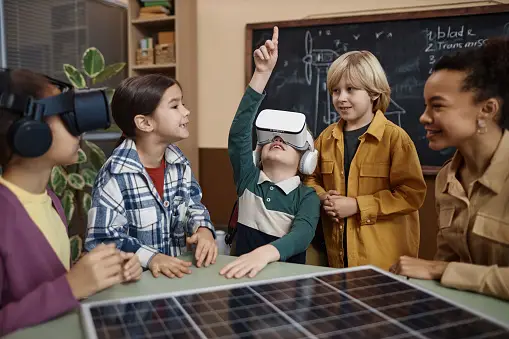In recent years, the integration of gamification in education settings has gained significant attention for its potential to revolutionize traditional learning approaches. One particular area where gamification shows promise is in fostering collaboration and teamwork among students. This paper explores the concept of gamification and its role in promoting collaboration and teamwork in educational environments.
Gamification involves the application of game design elements and principles in non-game contexts to engage and motivate individuals. In the realm of education, gamification leverages elements such as points, badges, leaderboards, and rewards to make learning more interactive and enjoyable. By incorporating game-like features into educational activities, gamification aims to enhance student engagement, motivation, and learning outcomes.
Understanding Collaboration and Teamwork in Education
Collaboration and teamwork are essential skills for success in both academic and professional settings. Collaborative learning environments encourage students to work together, share ideas, and solve problems collectively. Through collaboration, students develop communication skills, critical thinking abilities, and a deeper understanding of course material. Similarly, teamwork fosters cooperation, mutual respect, and effective group dynamics, preparing students for collaborative work environments in the future.
The Role of Gamification in Fostering Collaboration and Teamwork
Gamification offers a unique opportunity to promote collaboration and teamwork by creating immersive learning experiences that emphasize cooperation and collective achievement. By incorporating collaborative elements into gamified activities, educators can encourage students to collaborate, communicate, and work towards common goals. Whether through team-based challenges, cooperative quests, or multiplayer simulations, gamification provides a platform for students to engage in meaningful collaboration while enjoying the learning process.
Benefits of Gamification in Promoting Collaboration and Teamwork
The integration of gamification in education brings forth several benefits for fostering collaboration and teamwork among students:
- Increased Engagement: Gamified activities capture students’ attention and motivate them to actively participate in collaborative tasks.
- Enhanced Motivation: The use of rewards, feedback, and progress tracking in gamification motivates students to work together towards shared objectives.
- Improved Communication: Collaborative gamified activities require students to communicate effectively, share ideas, and coordinate their efforts, thereby enhancing their communication skills.
- Development of Teamwork Skills: Through gamified teamwork challenges, students learn to collaborate, delegate tasks, and resolve conflicts within a team setting.
- Real-world Application: Gamified activities simulate real-world scenarios, allowing students to apply collaborative skills in practical contexts and prepare for future professional endeavors.
Challenges and Considerations in Implementing Gamification for Collaboration
While gamification holds great potential for promoting collaboration and teamwork, its implementation in educational settings may encounter certain challenges:
- Design Complexity: Designing effective gamified activities that promote collaboration requires careful planning, creativity, and technical expertise.
- Technological Requirements: Gamification platforms and tools may require access to technology and resources, posing challenges for institutions with limited infrastructure.
- Assessment and Evaluation: Assessing collaborative skills within gamified contexts necessitates the development of appropriate evaluation methods and criteria.
- Overemphasis on Competition: Excessive focus on competitive elements in gamification may undermine collaboration and foster individualistic behavior among students.
- Accessibility and Inclusivity: Ensuring that gamified activities are accessible to all students, including those with diverse learning needs, requires consideration of inclusivity principles.
Examples of Successful Gamification Strategies for Collaboration and Teamwork
Several educational institutions and educators have successfully implemented gamification to promote collaboration and teamwork among students:
- Quest-Based Learning: Designing quests or missions that require collaboration among students to solve challenges, complete tasks, and achieve objectives.
- Simulations and Role-Playing Games: Using simulation games or role-playing activities to simulate real-world scenarios and encourage students to work together towards common goals.
- Collaborative Problem-Solving Challenges: Organizing group-based challenges or competitions that require students to collaborate, brainstorm solutions, and present their findings collectively.
- Peer Assessment and Feedback: Implementing peer assessment mechanisms within gamified activities to encourage students to provide constructive feedback and support each other’s learning.
- Gamified Learning Platforms: Leveraging gamified learning management systems or online platforms that incorporate collaboration features such as group discussions, shared resources, and collaborative projects.
Explore our article on the cause and effect of bullying on children in education to gain deeper insights into this pervasive issue. Understand the psychological impacts, social dynamics, and long-term consequences of bullying, empowering you to combat it effectively and foster safer learning environments for all students.
Conclusion
In conclusion, gamification holds immense potential for fostering collaboration and teamwork among students in educational settings. By integrating game-like elements into learning activities, educators can create engaging and interactive environments that promote collaboration, communication, and collective problem-solving. While challenges exist in implementing gamification for collaboration, the benefits outweigh the drawbacks, making gamification a valuable tool for enhancing collaborative learning experiences. As technology continues to evolve, gamification is poised to play an increasingly significant role in shaping the future of education and preparing students for success in a collaborative world.
click here to visit website

